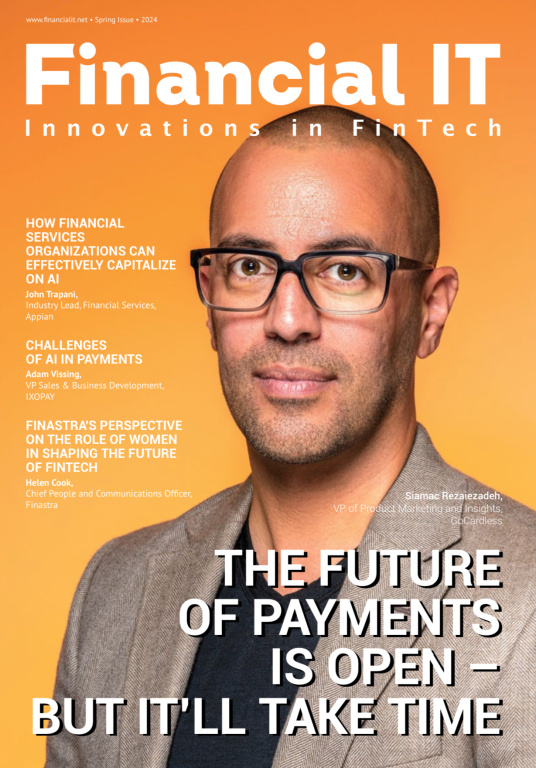Four Nexi Payment Predictions for 2024

- Tommaso Jacopo Ulissi, Head of Strategy, Transformation and Capital Allocation at Nexi Group
- 03.01.2024 01:00 pm #payments #ewallets #AI #ML
New generations (in particular, Generation Z) are super digital. They have never known the analogue world and they are not looking back.
Younger people prefer convenient mobile-enabled payments, driven by a broad variety of wallets provide value beyond just making a payment. These payments often offer a quick “tap and go” experience and increasingly in 2024, more payments will happen invisibly, without even the friction of a tap or indeed any manual initiation of the payment.
Instead, payments will take place in the background, within the terms that you have agreed by identifying yourself, such as a voice command, or scanning the registration plate of your car. Already during the coming year, we expect to see more merchant stores not just go cashless, but cashierless, enabled by fully automated payment processes, perhaps based on biometrics.
Digital wallets and digital currencies for the digital generation
The latest European regulation – and fast-growing penetration of national solutions and instant payment solutions – is pushing adoption of A2A and wallets throughout Europe. More digital wallets will emerge in 2024, driven by merchants, banks, and big tech players, making payments via mobile simpler and more convenient, providing more choice and value to the consumer.
Apple Pay and Google Pay may be the best-known examples today, but more payment wallets are on the horizon:
- The European Payments Initiative (EPI) will launch “wero”, its ground-breaking digital wallet solution. This is designed to deliver a European digital payment solution that meets evolving payment needs and provides a seamless, user-friendly payment experience to consumers and merchants across the continent.
wero will use an account-to-account infrastructure to enable faster payment flows with value-added services, including person-to-person (P2P) transactions, online shopping, loyalty programs and more, as it aims to fill gaps in the European payment ecosystem to become the digital wallet of choice.
- Secondly, following the investigatory phase led by the European Central Bank (ECB) into how a digital Euro might work in practice, we can expect to see significant progress towards the creation of a digital wallet for Central Bank Digital Currencies (CBDCs).
A digital Euro wallet, once set up with the relevant public authority, will ultimately provide the public with a digital form of cash. Consumers could then put money into their wallet via a linked bank account or through a cash deposit, after which they can start making payments both face-to-face and online. It’s critical that this payment system is as customer centric as possible: that is, it’s user friendly, trustworthy and has no barriers to entry or use.
Verticalized, embedded payments, anywhere
In 2024, payments will become more embedded into combined software offerings, often tailored to a certain vertical to help smaller merchants access a one-stop-shop of payment solutions and value-added services beyond the payment function. Here, the ISVs (Independent software vendors) can prove themselves strong partners to payment providers, combining all the business management software, including payment, into one solution that covers all merchant needs.
The choice this offers for simple and quick integrations enables vertical-specific merchants to access and embed a platform for tailored digital payment solutions. This could potentially include merchant financing, as well as BNPL (Buy Now, Pay Later) options for consumers. For example, a restaurant manager may wish to offer payment via iPad devices, through which they can also book tables and take orders; or an electrician may use SoftPOS technology on an Android phone so that they can accept customer payments on premise, via their existing mobile phone.
AI will create hyper-personalised solutions
Machine learning (ML) and the digitalisation of payments are inextricably linked. Automation enabled by smart algorithms has helped identify and reduce both errors and fraud. ML has also helped us analyse huge amounts of payment data to enable better modelling of future payment scenarios.
But from 2024, Artificial Intelligence (AI) will progressively become more integrated into business processes and solutions. AI will have tremendous impact for companies by allowing them to optimize a host of different internal processes. For merchants, you could imagine them having an AI assistant that helps the business leverage data analytics, set up webstores, set up chatbots for consumers, or build value-add services autonomously.
AI will also integrate more deeply into the payment mix, using generative capabilities to create hyper-personalised solutions that will enhance the shopper experience, while assessing the risk profile of every purchase in real time and reducing the number of cumbersome checks, if possible.
As the technology improves to become more accurate and trustworthy, previously unthought of shopping experiences will be at the fingertips of every shopper in the digital age.





















